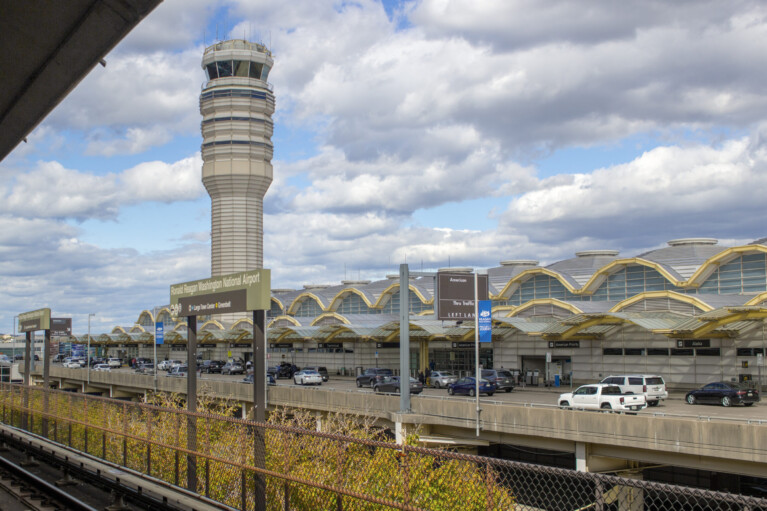Commentary: Md. has laid the foundation for sustainable and high-quality child care services — but can families afford it?

By Franklyn Baker and Laura Weeldreyer
The writers are president and CEO of United Way of Central Maryland, and executive director of the Maryland Family Network, respectively.
President Biden’s Executive Order on Increasing Access to High-Quality Care and Supporting Caregivers represents a significant step toward addressing the pressing needs of families and individuals across the nation. Inclusive of more than 50 directives to support child care, home-based care, family caregivers, and long-term care, the order makes clear there is need for accessible, affordable and quality care across generations. The need here in Maryland, despite efforts to provide comprehensive care, remains evident.
As the leaders of two Maryland-based organizations who work to make quality child care more accessible and affordable, we are cautiously optimistic about what the executive order will mean for the families we serve. There is overwhelming data that demonstrates the burden high child care costs pose to families in our communities.
We recognize the value the General Assembly and governor place on quality early learning. In 2023, we celebrate the passage of a bill which permanently raises the income eligibility for the state’s Child Care Scholarship Program to its current historically high level. We also appreciate lawmakers’ efforts to support and strengthen the field of child care, which has long been the lowest paid sector of our country’s education workforce. While these accomplishments are significant, more work needs to be done.
Child care is typically the highest monthly cost for an ALICE (Asset Limited, Income Constrained, Employed) family of four. Nearly 900,000 Marylanders are ALICE.
The recent report, “ALICE in the Crosscurrents: COVID and Financial Hardship in Maryland,” cites the average cost of child care as $1,538 per month, or about 23% of a family of four’s monthly survival budget.
An inadequate child care system is also a fiscal burden on the state’s economy. Maryland Family Network (MFN) reported in “Counting Our Losses” that 49% of Maryland parents with children ages 5 and under reported short-term disruptions to employment due to child care issues. Overall, MFN reported a $2.41 billion per year cost to Maryland employers due to employee absences related to child care, and $117 million in lost Maryland tax revenue.
Maryland families need affordable, accessible, high-quality child care with varied hour availability to match our changing workforce. At the same time, the indispensable care provider workforce needs a living wage.
Common sense and broad public consensus tell us that child care and early childhood development are important and should be more affordable. In fact, this is one of the rare issues on which voters continue to agree when surveyed, despite political party or ideology. We need policymakers to come together on a decision on how to pay for it.
United Way of Central Maryland has established United for Childcare to transform the early childhood education ecosystem through a multi-generational strategy that propels digital equity, elevates the child care profession and expands access to quality, affordable early childhood educations to close the racial and wealth educational gap. The nonprofit opened a family center in Columbia last fall to help lessen the mental and fiscal burden for families in the area. The Family Center accepts state scholarship funding for children, and is structured for a diversified clientele, allowing it to provide adequate pay for employees, and quality care for families at all income levels. Two other Family Centers, located in the Poppleton and Brooklyn neighborhoods of Baltimore, offer care for student parents — allowing them to continue school, graduate, and have successful careers.
Meanwhile, MFN operates a network of 28 Family Support/Patty Centers across Maryland and has since the network’s creation in 1986. MFN’s centers help thousands of parents finish their education, learn job readiness skills, build solid social networks and improve parenting skills. At the same time, their children have access to a state-of-the-art early care and education setting, many of which are Early Head Start programs, to help them reach their greatest potential. Decades of research has shown that these types of programs are proven to improve outcomes for children into adulthood by increasing high school and college graduation rates, reducing the number of adolescent pregnancies, addressing mental and physical health issues early, cutting incarceration rates, reducing substance misuse, and boosting earning potential — all of which save taxpayers money.
But even with the work our two organizations collectively have undertaken and accomplished, there is continued need for support in Maryland. Our state is an example of the positive impact that comprehensive child care programs can have on individuals, families and communities, and of the continued need for accessible, affordable and high-quality care. President Biden’s executive order provides a significant opportunity to build upon our state’s successes and create a more inclusive and equitable care system for all. By ensuring sustained investment and fostering collaboration between federal and state authorities, we can forge a future where child care is universally accessible, enabling families to thrive. Now is the time for lawmakers and workplaces to invest in child care.



